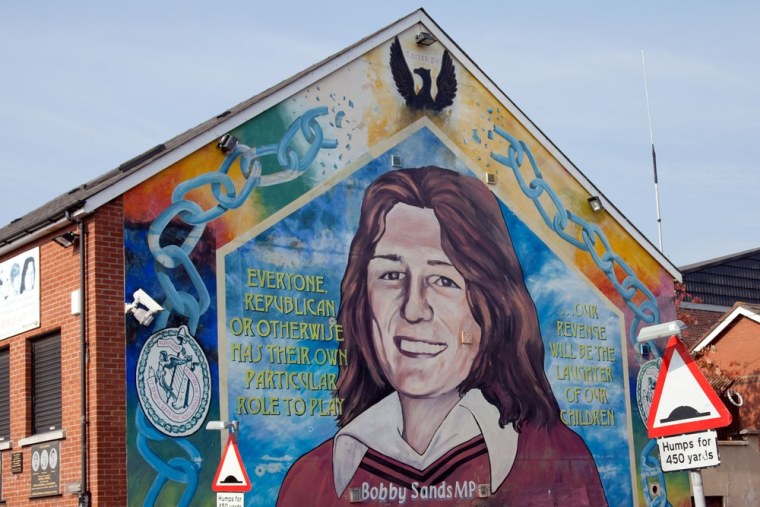A visit to the Emerald Isle is not complete without including Northern Ireland. It offers the tourist a very different but still very Irish world. While the friction between Catholics and Protestants has caused "the Troubles," it has also created some fascinating travel opportunities. It's not dangerous ... and it's reality.
The most important single stop is the capital — Belfast. A visit to Northern Ireland's largest city makes a perfect day trip from Dublin. With the handy two-hour Dublin-Belfast train, you can leave Dublin early and have plenty of time to tour the city before taking the evening train back. And, while Belfast has the rough edges of any industrial big city, you have to look for trouble to find it here. Just don't seek out edgy pubs in Protestant neighborhoods to sing Catholic songs.
Wandering through cheery downtown Belfast, it's hard to believe that the bright and bustling pedestrian center used to be a subdued, traffic-free security zone. Now there's no hint of security checks, once a tiresome daily routine.
Belfast is the birthplace of the Titanic — and the tourism industry here is hoping you'll associate that epic with the city rather than the strife that kept it in headlines in the last generation. To commemorate Belfast's shipbuilding industry — and the 100th anniversary of the Titanic's only voyage — the city will open a visitors' center next April, at a cost of 100 million euros, called Titanic Belfast.
Tale of the Titanic
High-tech displays will tell the tale of the famous luxury liner. A highlight will be a ride through a mock-up of the ship while it was being built. The spacey architecture of the new building is already a landmark on the city's skyline. Six stories tall, it's clad with more than 3,000 aluminum panels that reflect the sunlight.
On your Belfast visit, don't miss another landmark — Belfast's City Hall. This grand structure's 173-foot-tall, green copper dome dominates the city center. Take the worthwhile — and free — 45-minute tour, which gives you a rundown on city government and an explanation of the decor that makes this an Ulster political hall of fame.
Another top sight is the Ulster Folk and Transport Museum in nearby Cultra. It has an open-air collection of reconstructed buildings from all over Ulster plus a hodgepodge of trains, planes and cars — including John DeLorean's iconic sports car from the 1980s, which was made here.
Challenges between the city's sectarian neighborhoods remain. And a Belfast visit wouldn't be complete without a look at the working-class neighborhoods of Falls Road (Catholic) and Shankill Road or Sandy Row (Protestant).
Start in downtown Belfast at the Castle Junction Car Park. It's filled with old black cabs — and has the only Irish-language signs in that part of the city. These cabs go up the Falls Road to Milltown Cemetery, passing lots of murals celebrating Catholic and Republican martyrs. You can explore this Catholic neighborhood on your own, or hire a trained cabbie to give you a one-hour tour.
Celebrity felons
I once had a guide who was particularly determined to make his country's struggles vivid. He introduced me to Belfast's Felons' Club — where membership is limited to those who've spent at least a year and a day in a British prison for political crimes. Hearing heroic stories of Irish resistance while sharing a Guinness with a celebrity felon gives you an affinity for their struggles. The next day at Milltown Cemetery, I walked through the green-trimmed gravesites of his prison-mates — some of whom starved themselves to death for the cause of Irish independence.
But to get the full story, you need to also talk to the other side. While you can ride a shared black cab through the Protestant Shankill Road area, the easiest way to get a dose of the Unionist side is to walk Sandy Row — a working-class-Protestant street behind Hotel Europa. (Protestant Unionists are keen on maintaining their union with Great Britain, whereas Catholic Republicans feel a stronger kinship with the Republic of Ireland.)
A stop in the Unionist memorabilia shop, a pub or one of the many cheap eateries here will give you an opportunity to talk to a local. You'll see murals filled with Unionist symbolism, such as the one depicting William of Orange's victory over the Catholic King James II in the Battle of the Boyne.
Speeding on the train back to Dublin, you'll gaze at the peaceful, lush Irish countryside while pondering the DeLorean, the Titanic and the Troubles. Instead of Blarney stones and leprechauns, Belfast offers a refreshing dose of today's reality to balance your Irish vacation.
( writes European travel guidebooks and hosts travel shows on public television and public radio. E-mail him at , or write to him c/o P.O. Box 2009, Edmonds, Wash. 98020.)
